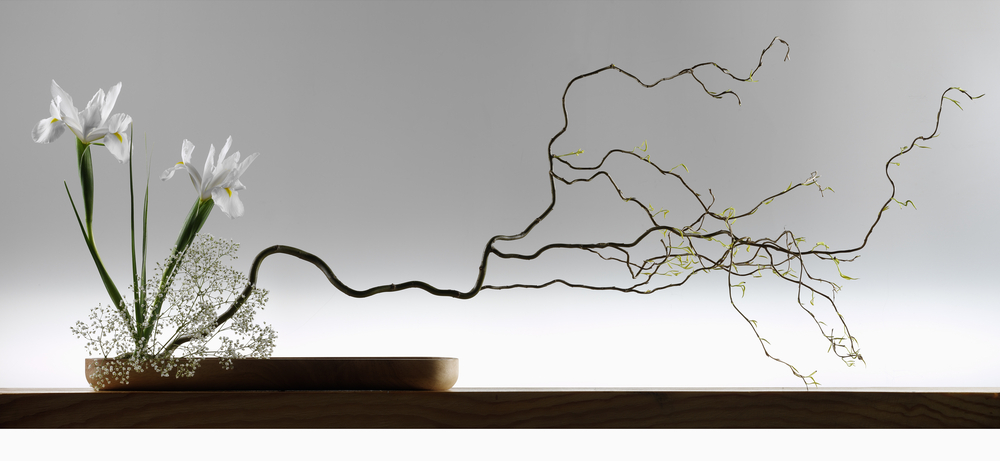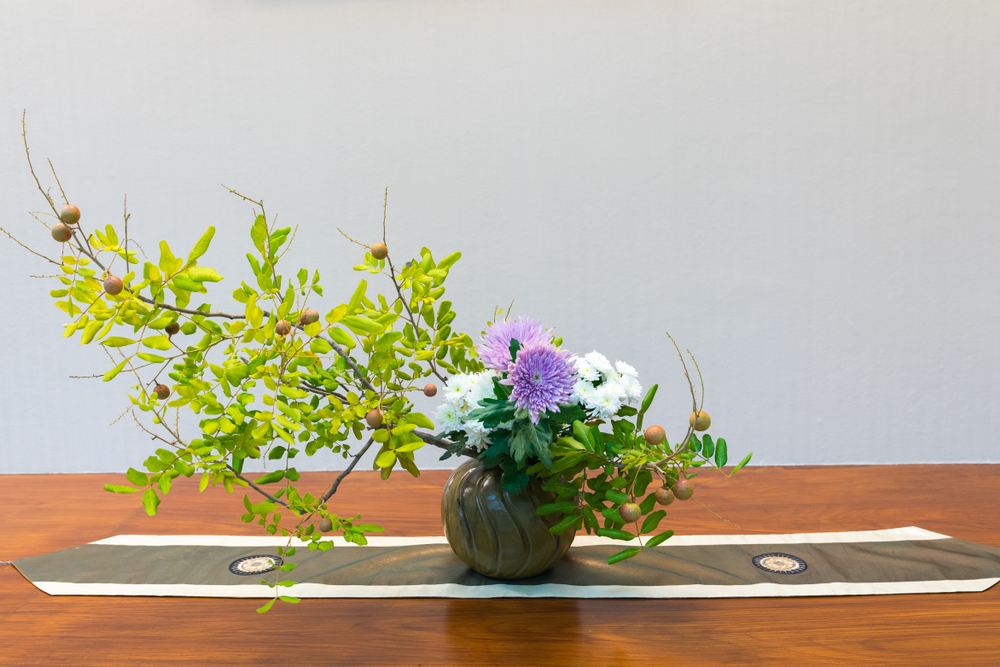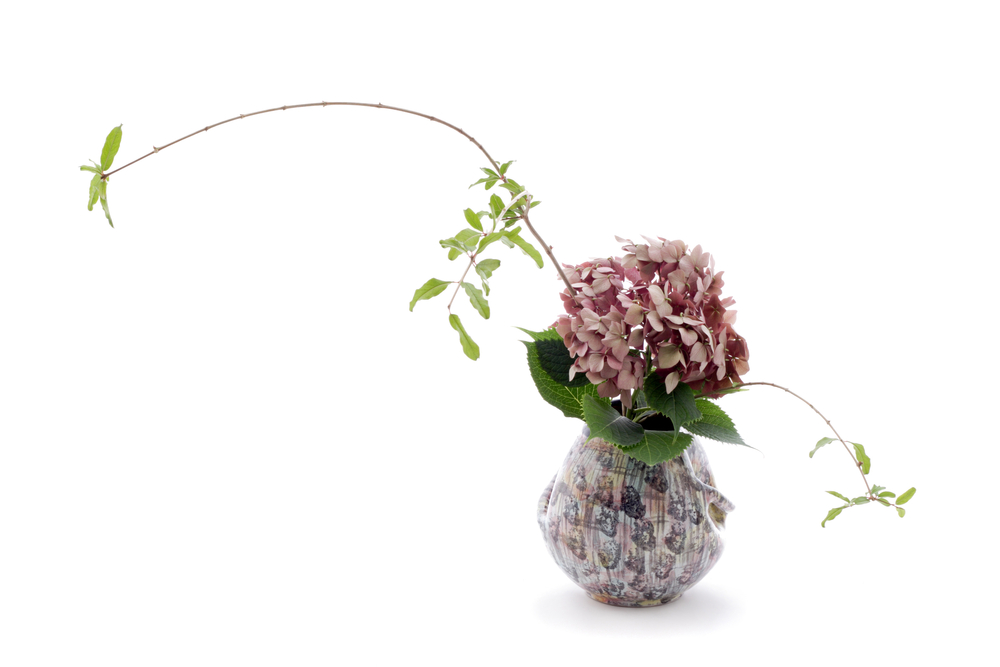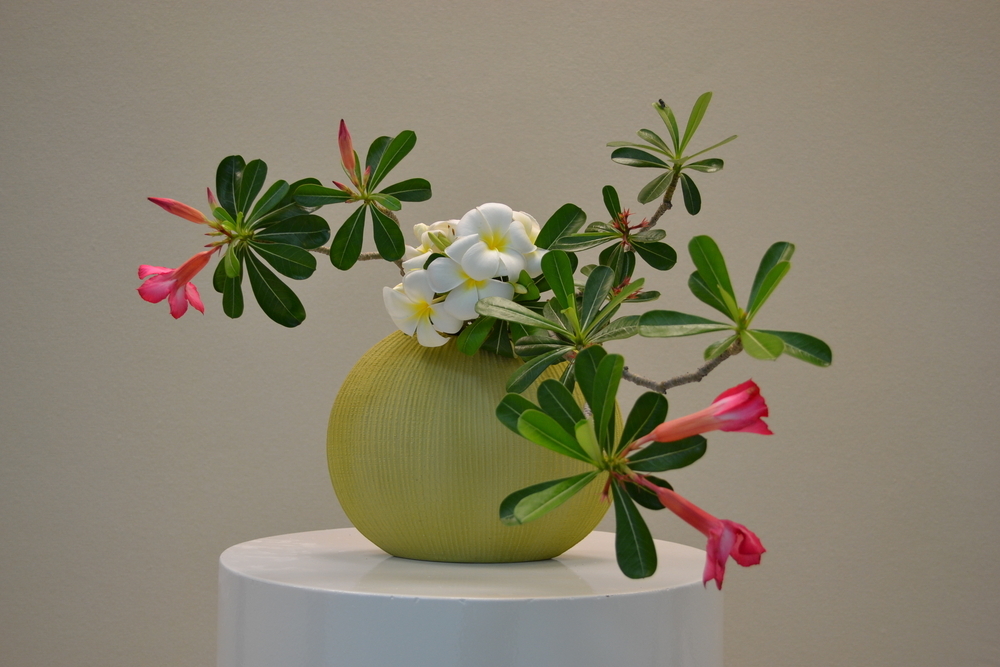One of the trendiest new floral forms isn’t new at all. In fact, Ikebana–a Japanese flower-arranging technique–originated in 6th century Japan, carried over from China and informed by the practice of leaving floral offerings at temples. It’s more accurate to say that Ikebana is both a study and an art; the method is rooted in Buddhist philosophy. The main idea? When composed correctly, Ikebana lets you see the world in one flower. To do so, each composition invokes the seasons and the various stages of a flower’s growth. It’s like a floral haiku.
A traditional composition is triangular in nature, featuring three floral elements of different heights. Seasonality drives the selection of elements, but each carries lots of meaning: the tallest floral represents heaven, the lowest earth, and whatever’s in the middle represents man, who aims to reconcile the two. Most arrangements are spare, intentional and extremely controlled, which is part of their allure. Ikebana is about negotiating between dualities and striking a balance; that gives each design loads of interest and real singularity.
“Standing flowers” or tatehana, describes one approach where the flowers involved in the design appear to be holding themselves upright (in reality, a “frog” is usually placed at the bottom of the container that holds the flowers in place). With nageire, the flowers lean against the container as if they were tossed there.
This kind of Japanese minimalism is catching on in the floral world, where it’s even showing up in wedding designs. The elegance and sculptural appeal of this type of floral work lends itself to a deeply meaningful occasion like a wedding. Luckily, Ikebana is being reinterpreted by floral artists today who feel liberated from all of the original rules that governed the form. Shapes may be triangular or simply angular, hinting at the tension between heaven and earth in a more subtle fashion. The end result? Stunning reception centerpieces that reflect the best of modern Ikebana.





